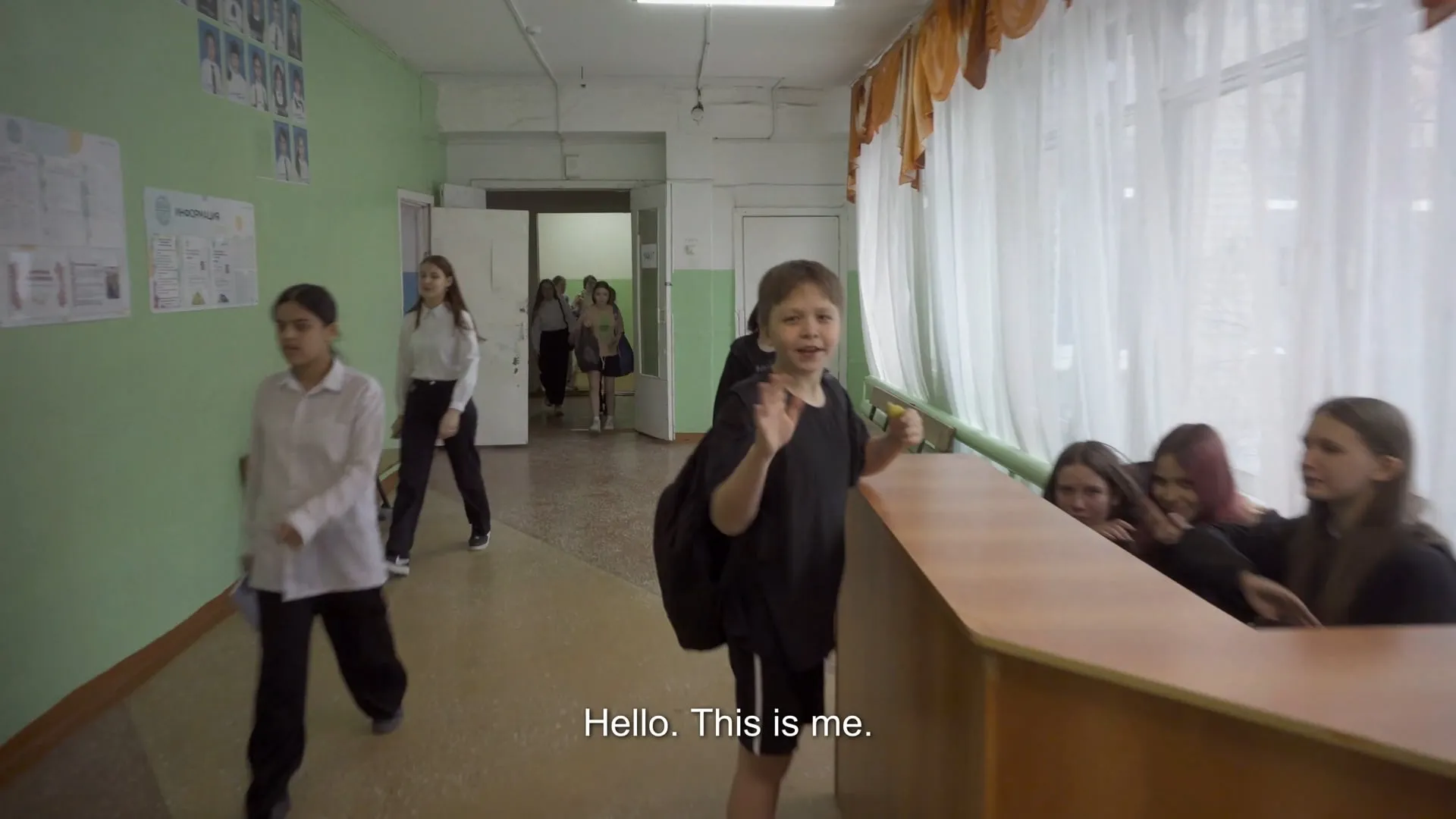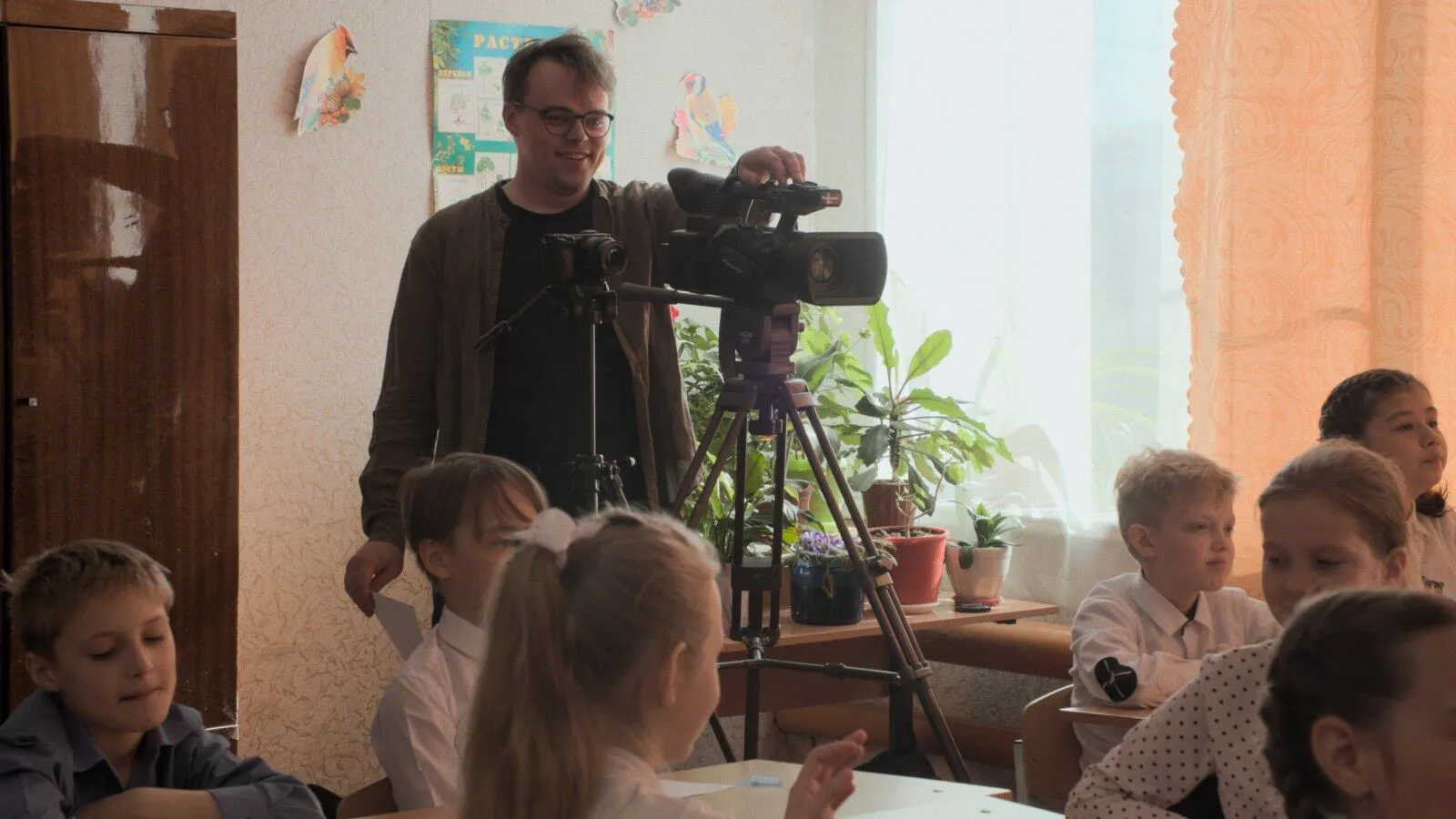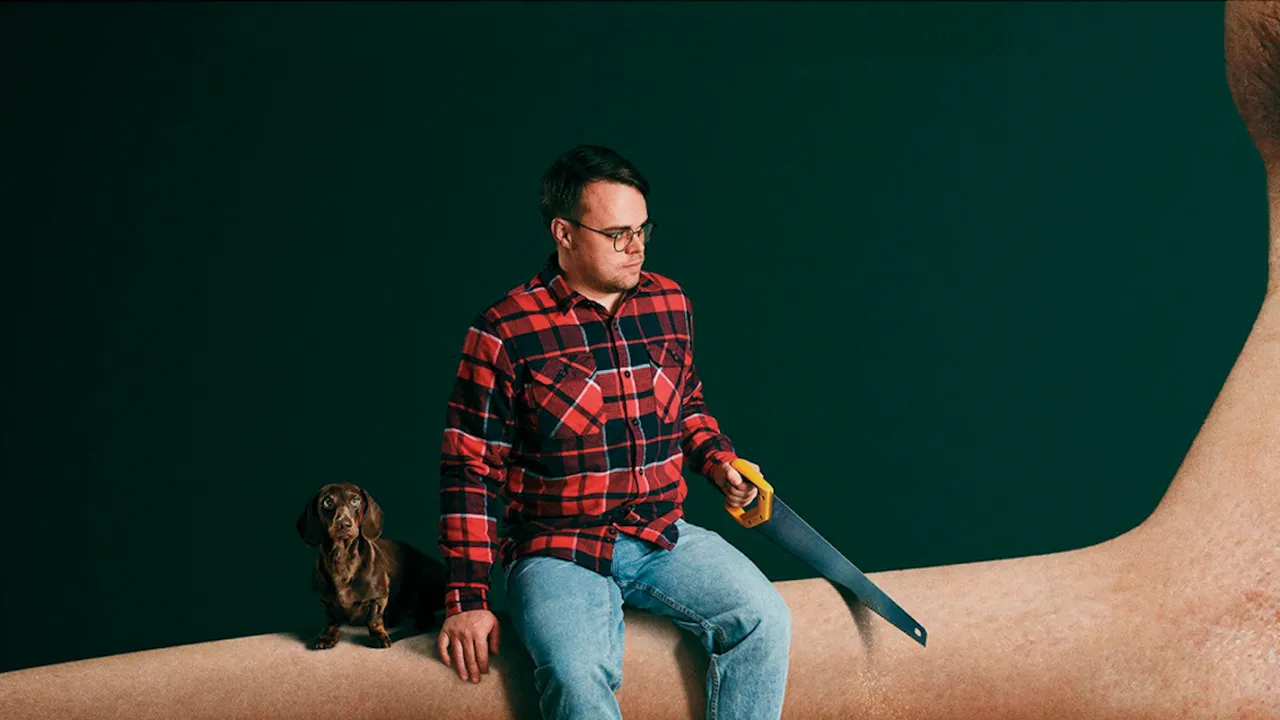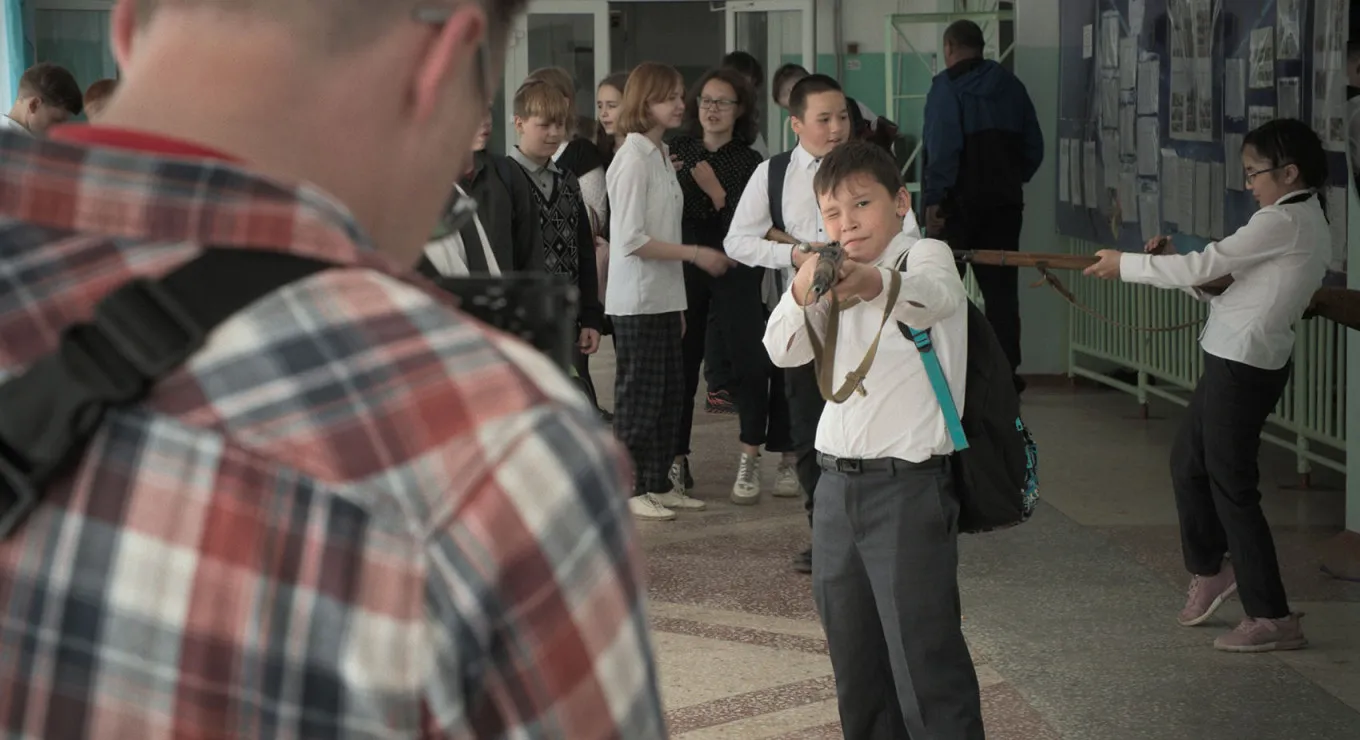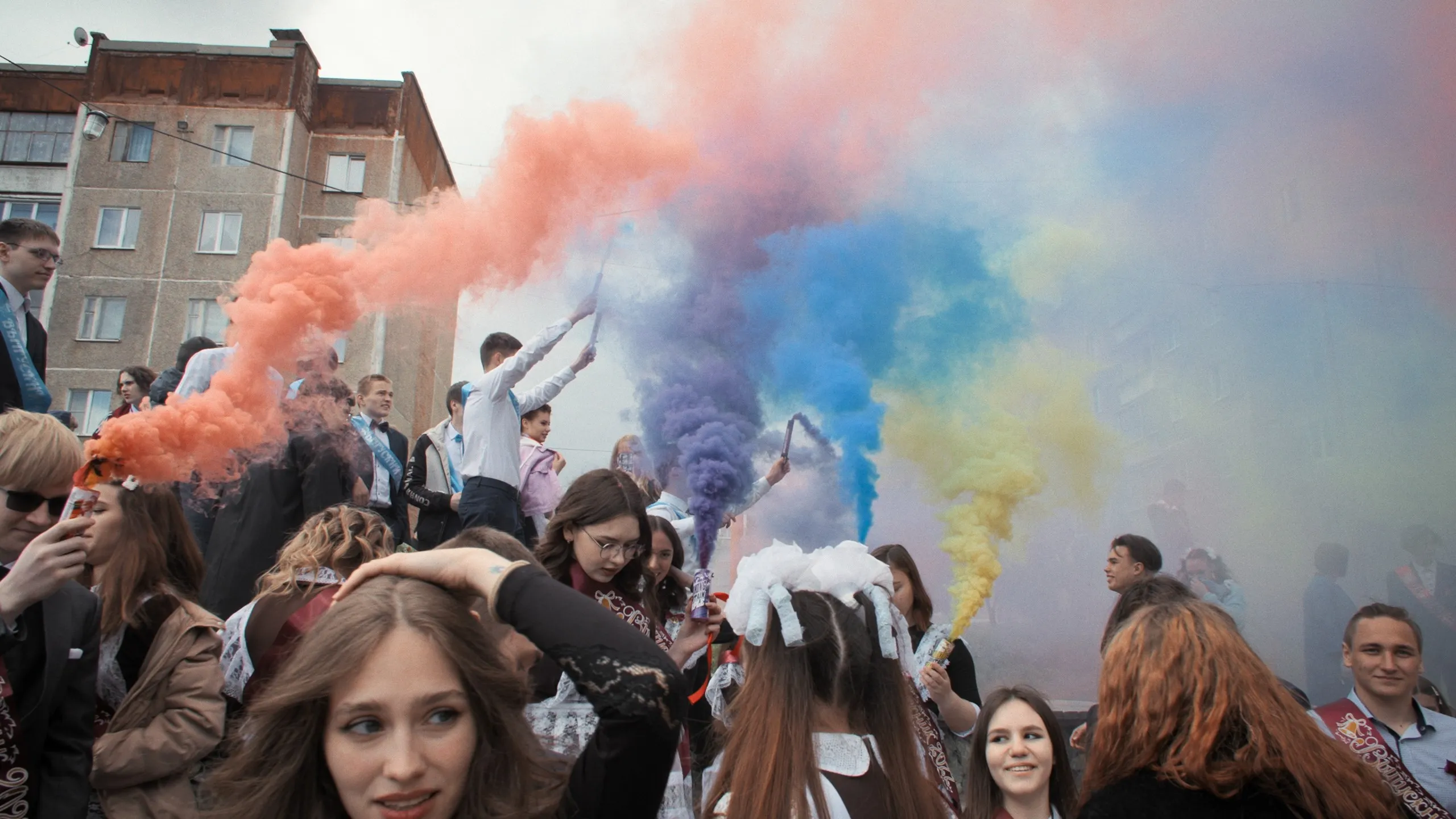Pasha Talankin stands at the heart of this documentary, a devoted educator who quietly records the unfolding changes in his own school. As a teacher and an unauthorized filmmaker, he captures the evolution of his beloved institution amidst an increase in government-controlled messaging. His work reveals how the familiar rhythms of school life in Karabash are gradually replaced by a rigid, state-inspired agenda.
Set in a small industrial town in the Ural Mountains, Karabash is marked by its notorious history of environmental decay and challenging living conditions. This setting contrasts sharply with the warmth and personal connection that Pasha maintains with his students. Through his lens, we witness a community caught in the grip of enforced allegiance, where a place once synonymous with local pride becomes a stage for political display.
Pasha’s internal conflict emerges as he balances his commitment to the young minds under his care with the pressure to support a narrative that undermines his beliefs. The film charts his struggle as he documents daily life and the impact of stringent orders on teaching methods and the innocence of childhood. His portrayal invites viewers to reflect on the cost of adhering to a prescribed message, even when it comes at the price of personal integrity.
Narrative and Direction
The documentary presents its story in a way that intertwines the everyday moments at the school with intermittent glimpses into the past before the current upheaval began. The sequence of events does not follow a simple, linear order; instead, it shifts between the present routine and earlier times, allowing the audience to notice how the school’s atmosphere gradually transforms under the pressure of enforced loyalty. This technique draws the viewer into the evolving mood of the institution as the normal cadence of life gives way to a rigid routine dictated by new governmental policies.
The creative partnership behind the film brings together the insights of two distinct voices. David Borenstein’s method of shaping the film pairs with Pasha Talankin’s firsthand accounts, creating a multifaceted representation of modern Russian life.
Pasha’s personal reflections and offhand remarks, delivered in a style that feels natural and spontaneous, give the narrative an intimate quality that makes his inner turmoil more palpable. His voiceover recordings sound as though they capture his genuine reactions, a quality reminiscent of the raw storytelling found in French New Wave classics—a style I have long admired from directors like Godard and Truffaut.
There is a measured tempo in how the story unfolds. Moments of lightheartedness or casual banter appear briefly, providing relief before returning to scenes that capture the gravity of the situation—a shift from a familiar educational setting to one increasingly marked by imposed rituals and state-driven displays of patriotism.
The film employs direct-to-camera confessions, on-location recordings, and unscripted interviews that serve as key moments in its narrative. One notable instance is an act of defiance during a public assembly, which stands out as a bold and unforgettable interruption in the unfolding story.
Themes and Symbolism
The film presents governmental messaging as a powerful force infiltrating the school environment. Classroom activities and mandatory drills transform into visual representations of official persuasion. Everyday lessons and morning formations carry the weight of a regime determined to leave its imprint.
Through carefully composed scenes, the film shows how these routines act as signals of a system intent on standardizing thought. The portrayal of these moments encourages viewers to consider how institutions can be repurposed to serve political aims.
Pasha quietly challenges this imposed routine. His subtle acts of noncompliance serve as a counterpoint to the overwhelming pressure around him. Small moments—a recorded substitution of a familiar tune during an assembly or a whispered remark during a lesson—mark his inner defiance.
These fragments of resistance cast him in the role of an unassuming dissenter who refuses to conform to the system’s rules. His behavior invites reflection on the personal cost of such resistance in an environment dominated by dictates.
The change in the school leaves an unmistakable mark on the students. Spaces once filled with laughter now suggest a loss of youthfulness and optimism. The transformation of a nurturing setting into a controlled framework highlights how the political agenda affects formative experiences. Visual cues, such as empty playgrounds set against a backdrop of rigid assemblies, emphasize the erosion of a safe haven. This shift speaks to the cost incurred when a place of growth is repurposed to serve uniformity.
The film also contrasts the residents’ fond memories of their hometown with the intrusive presence of state control. Familiar surroundings are interwoven with new, stark symbols of power, resulting in an unsettling reminder of a fractured identity. This tension between personal pride in the local heritage and the harsh influence of authoritative messages invites viewers to reflect on the interplay between individual memory and enforced conformity.
Cinematography and Visual Storytelling
The film employs a mixture of archival school footage, impromptu recordings, and carefully arranged scenes. The use of natural light lends a raw feel to each frame, capturing the striking contrast between Karabash’s enduring charm and its visible decay. This approach allows viewers to witness the town’s rugged character, where the soft glow of sunrise over industrial backdrops brings forth both a sense of nostalgia and unease.
Pasha’s dual role as teacher and behind-the-camera chronicler infuses the film with a sense of authenticity. His self-shot material, unrefined and unscripted, offers a personal window into daily life at the school. Viewers catch moments where the genuine emotions of students and staff come to the fore—each glance and gesture emphasizing the real stakes of this transformation.
Recurring visual elements punctuate the narrative. Repetitive scenes of marching drills, displays of state symbols, and understated details of classroom routines work together as visual markers. Close-ups capture the subtle moods of the students, while expansive shots reveal the polluted contours of Karabash. Contrasts between relics from the past and the stark symbols of current authority add depth to the visual narrative, prompting reflection on how historical identity is being reshaped.
The editing maintains a rhythm that matches the film’s overall pace. Smooth shifts between everyday details and more symbolic images amplify the emotional impact, reinforcing the evolving story of personal resistance and systemic change.
Character and Performances
Pasha Talankin stands as a figure of quiet defiance, fulfilling the roles of educator and self-documented chronicler. His portrayal begins with a gentle warmth in the classroom that evolves into a reserved tension as he navigates pressures from his surroundings. His expressions and minimal yet pointed dialogue reveal a man wrestling with the pull between a cherished commitment to his students and the weight of imposed expectations.
Supporting figures enrich this portrayal, with Pavel Abdulmanov serving as a stark counterpoint. His readiness to adhere to directives from above starkly contrasts with Pasha’s subtle resistance. Other teachers and students emerge as individuals whose varied responses to the new order mirror distinct attitudes and experiences found in communities facing similar shifts. Unscripted interviews and natural interactions capture moments that feel genuine and unscripted, making each character’s reaction both believable and deeply human.
Pasha’s relationships with his students are marked by mutual respect and an effortless sharing of ideas—a dynamic that brings a tangible sense of community to the film. The small gestures of support and the occasional smile exchanged during a quiet moment evoke personal memories of nurturing educational experiences reminiscent of those found in films by French New Wave directors I admire.
Family connections provide another layer of nuance. Discreet differences in views and pride interlace with underlying tensions that add depth to his daily reality. Pasha’s moments of vulnerability, set against his determined gaze, highlight a balance between personal softness and the unmistakable courage required to stand apart in a pressured environment.
Cultural and Historical Context
The film situates its story in Russia after 2022, during an era when the government transformed education into a tool for instilling nationalistic views. State policies such as the Federal Patriotic Education Policy spark the changes seen on screen, and the shift appears as a deliberate move by authorities to shape minds and modify values. The movie captures this process with a sense of immediacy, highlighting the weight of official mandates on day-to-day classroom life.
Looking back at past regimes, the film draws clear lines between current events and well-known episodes of propaganda from previous eras. References to figures and methods common in Soviet times remind viewers that state messaging has long targeted public opinion.
The documentary challenges the idea that such practices belong solely to history by portraying them as evolving techniques still very much in use. This perspective makes the film a valuable record of how persuasion can transform society.
The transformation seen in classrooms serves as a mirror for a larger shift in public education. Older educators appear resigned to the state’s plans, while younger teachers express resistance through subtle acts of defiance. The visual record of students compelled into rigid routines contrasts with the memory of an environment that once nurtured creativity and independent thought. These images capture the cost of a strict, militarized curriculum and reveal the strain on a generation caught between tradition and enforced uniformity.
The town of Karabash itself emerges as a character with a rich past and a troubled present. Its identity as a small community, scarred by industrial decline and environmental harm, clashes with the new demands imposed from above. The film’s message about the control of information and the reshaping of local pride strikes a chord that extends well beyond national borders, linking personal freedom with issues that concern audiences everywhere.
Final Reflections and Impact
The film leaves a lingering mark through its intimate portrayal of a single voice resisting a pervasive system of control. Its raw depiction of individual defiance catches the eye and challenges viewers to consider the true cost of obedience when faced with forces intent on controlling thought and action. The narrative opens up a space where personal sacrifice and the burden of imposed loyalties are shown with an honesty that is hard to ignore.
The story beckons us to pause and consider what truth means in a setting where facts are shaped to serve a particular purpose. By witnessing moments of quiet courage and subtle rebellion, one is reminded of the inherent risks faced by those who document and resist in oppressive environments. There is a clear reflection on the heavy demands placed on educators and ordinary citizens, whose quiet acts of dissent serve to keep history honest.
This record of persistence offers more than just a window into a troubled moment—it provides a prompt for discussion on the rights to learning and self-expression. The image of a community caught in a tightening grip of propaganda stirs a thoughtful response about the future of freedom and independent thought, sparking dialogue among audiences who are increasingly attuned to the interplay between state power and personal agency.
The Review
Mr. Nobody Against Putin
Verdict: This documentary stands out as a powerful chronicle of personal defiance in an environment fraught with state-controlled narratives. Its raw storytelling and genuine character portrayals open up meaningful discussions on the cost of conformity and the value of independent thought. The film resonates deeply, leaving viewers with much to consider about the future of freedom in education and beyond.
PROS
- Genuine, unscripted character portrayals
- Bold visual narrative with a raw aesthetic
- Insightful exploration of state influence on education
- Intimate, personal approach that enhances authenticity
CONS
- Uneven pacing in parts of the narrative
- Some segments may feel repetitive
- Limited exploration of alternative perspectives









































